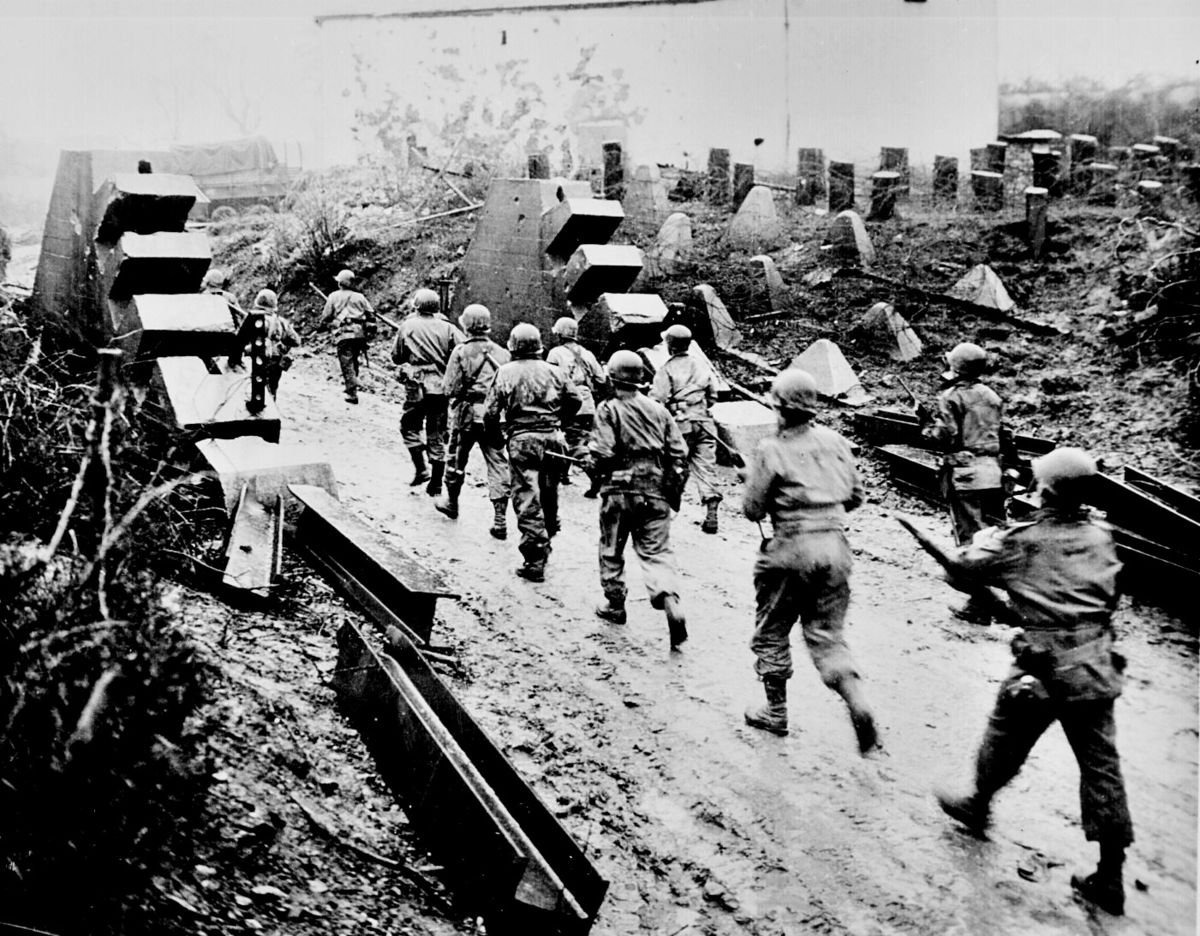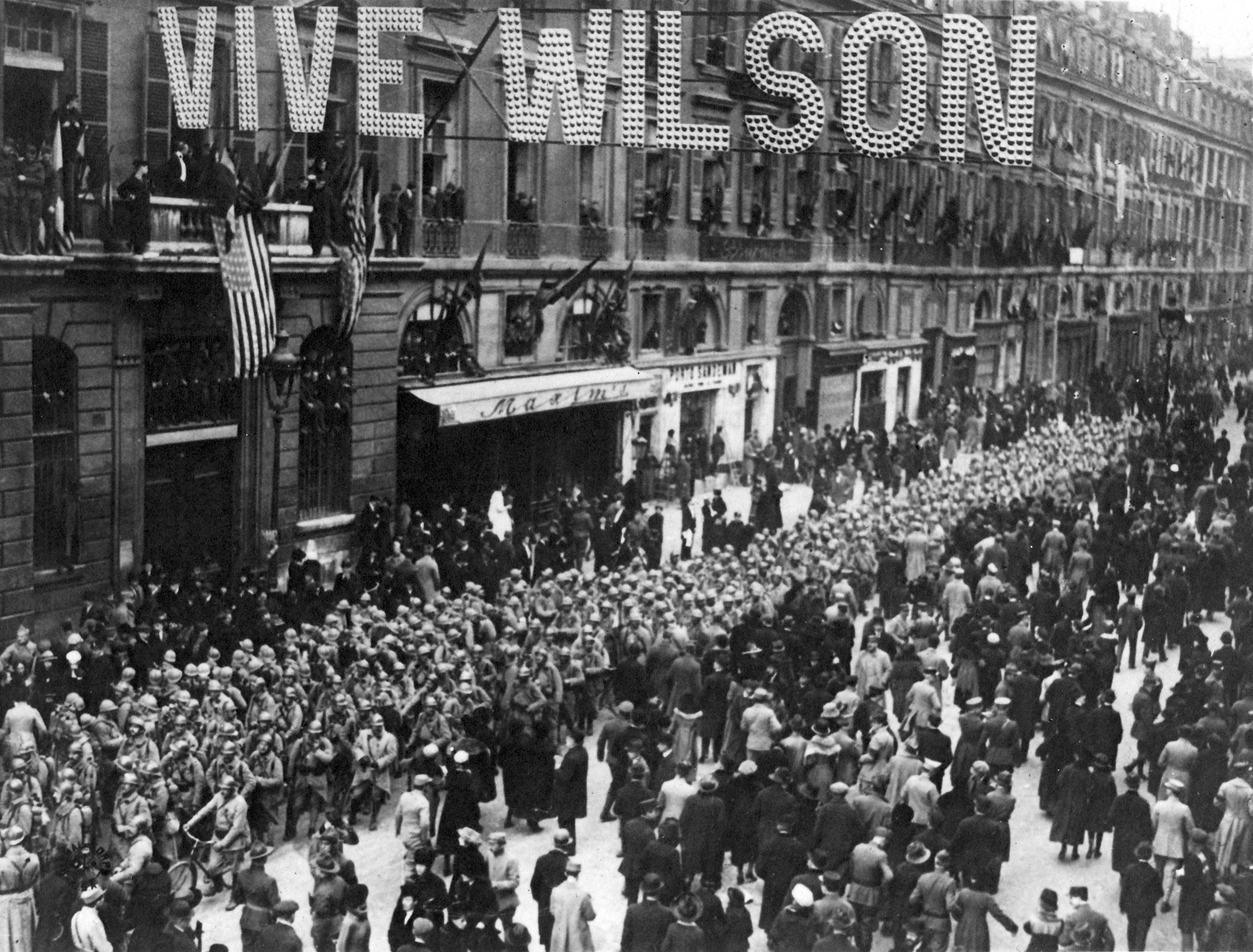Americans See Germany for First Time.
Out of Balkan Minorities, a New Pan-Slav State.
Wilson Sailing for Europe.
Special to The Great War Project.
(26 November) On armistice day November 11th 1918, Austria was without an Empire and Germany was without an Emperor.
So writes historian Martin Gilbert assessing the great political changes the war has brought about.

Great changes coming.
Wrote Albert Einstein from Berlin that day, “Militarism and bureaucracy have been thoroughly abolished here.”
But the tasks for the defeated nations are enormous.
Writes historian Gilbert, “Combating the forces of revolution on the left, and militarism on the right, reviving war-ravaged economies, maintaining national morale in the face of the stigma of defeat, the growing burden of war guilt….”
These are enormous tasks.

Americans on the march to Germany.
And there’s more. “A desire to recover the territories and self-assurances that had been ripped away at the last moment, and a search for scapegoats.”
For the victors, too, the burdens of peace are great, according to Gilbert.
Promises of a better life for the soldiers. But their fate is a puzzle.
Writes one German general to a friend in Britain on November 11th , “I don’t know if I am glad or sorry to be alive,” he observes as he marched his troops toward the Belgian/German frontier.
“I only know that it wasn’t my fault that I am alive.”
“On the morning of December 1st, writes historian Gilbert, “the first British troops cross the border into Germany.”
And on that same day, the first American troops cross into Germany.
They are amazed, reports Gilbert, “by the contrast between the ruined villages and farms of the battle zones in northern France and the carefully cultivated fields and prosperous villages of Germany.”
“The German troops themselves are tired and wet. They had marched for two weeks mostly in the rain, to towns on the Rhine which had known nothing of war.”

Allied propaganda.
And whose inhabitants resented the arrival of a conqueror, who it was increasingly believed had not defeated them in battle, but had secured an armistice as a result of their own leaders’ failure to avert revolution and republicanism.”
In Vienna hunger quickly became a serious challenge.
On the political front, “several new states emerged,”
…reported historian Martin Gilbert “on the wreckage and fragmentations of the four defeated empires” – Germany, Austria, Russia, and Ottoman Turkey.”
On the first of December a century ago, on the day when Allied troops marched into Germany, the Kingdom of Serbs, Croats, and Slovenes was proclaimed in Belgrade. Essentially it was a pan-Slav state, eventually becoming Yugoslavia, “the inheritors of Austria’s defeat.”
All of this is extremely confusing for the ordinary person on the street. Europe is being made over, but just how is impossible to grasp.
In the meantime, the process of fashioning a fully-fledged peace treaty is now underway, in Paris

Paris awaiting Wilson
On December 4th, 1918, the American president, Woodrow Wilson, set sail for Europe.

Re the photo, “Americans on the march into Germany,” in this posting: It appears from the helmets and the uniforms that this is a Second World War photo and not WW1. .
The photo above captioned “Americans march to Germany” looks to be from WW2, not WW1 (see the shape of the soldiers’ helmets).
I agree. In addition, the concrete structure of the bridge looks a lot like elements of the Siegfried Line.
Mike – great to see you continuing. thank you – alex
I agree with both comments- continuing The Great War Project will be very interesting, and yes, that photo appears to be of soldiers wearing WW2-era USA helmets.